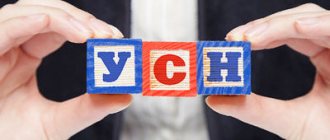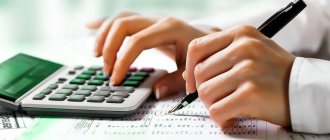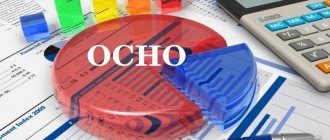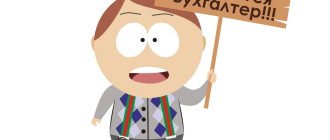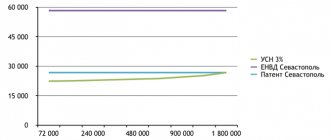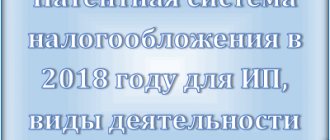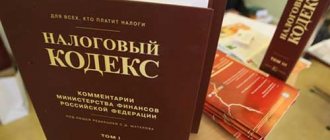Input VAT under simplified tax system
| Input Tax Accounting Case | What to do with added tax | Conditions to be fulfilled |
| Payment of VAT to suppliers at the time of registration on the simplified tax system | Include in expenses | Conditions:
|
| Transferring activities from the main mode to the simplified one | Restore | Conditions:
|
| Switching from simplified to basic mode | Send to deduction | Conditions:
|
VAT compensation
Compensation is a way that allows entrepreneurs on the simplified tax system to make transactions with organizations on the OSNO. With its help, you can take into account and deduct VAT, which was transferred by entrepreneurs to the simplified tax system when purchasing raw materials necessary to fulfill contractual obligations.
Joint activities of enterprises on the simplified taxation system and OSNO imply the presence of risk for both. In the case of “simplification”, the tax office may recognize the amount of the contract as unreasonable and reduce its value; for the general taxation system, there is a possibility that inspectors will refuse to apply a deduction that allows reducing the amount of tax to be paid to the budget.
In this regard, it is necessary to approach the issue of documentation very carefully. And also be guided by the following scheme of actions:
Scheme of actions of counterparties on the simplified tax system and OSNO
The estimate is the primary document when carrying out construction work. All planned work and the order of its implementation should be reflected here, as well as all possible costs. Further, it is on the basis of the approved estimate that acts and invoices will be signed.
Accounting for input tax in expenses
Input added tax is the amount added by the supplier (performer) to the cost of valuables, services, and work. If the buyer company operates in the main mode, then this tax can be reimbursed by reducing the VAT payable by its amount. A simplified company will not be able to reimburse the tax, since such an economic entity is not recognized as a payer of the tax in question.
It is allowed to take into account the paid added tax in expenses that reduce the tax base. This operation must be performed in the same quarter in which expenses include the cost of acquisitions, services of various types, and work. It is impossible to take into account inventory items, fixed assets, services, and work at a cost that includes tax. It is necessary to take into account the tax separately, including it in expenses as a separate operation.
Article 346.17 determines the time frame within which a simplifier can take into account the input added tax paid to the supplier in his expenses. The following terms vary depending on the type of acquisition:
- Upon sale - in relation to paid assets acquired for resale;
- Upon receipt - in relation to paid material assets, raw materials, services, works;
- Upon the start of operation - in relation to purchased and paid for operating systems.
An important condition is that only paid VAT can be included in expenses under the simplified tax system.
The added tax must be transferred to costs and operations related to the import of valuables. The simplifier cannot reimburse such additional tax, despite the fact that the subject is obliged to pay it under the simplified tax system.
If the additional tax relates to standardized advertising expenses, then it can be included in expenses within the limits of a certain standard. Input tax above this standard cannot be taken into account in costs.
VAT cannot be classified as an expense for tax purposes if the cost of goods and materials for which it was paid is also not included in the expenses taken into account when calculating the tax burden. An example of such expenses is entertainment expenses.
To write off VAT as an expense, you need to wait until the goods are sold (materials are capitalized or fixed assets are put into operation). When tax is written off on goods purchased for resale, the moment of their actual sale should be taken into account. In this case, the attribution of tax to expenses must be carried out in a part proportional to the cost of the realized values.
What has been written above is true for those simplifiers who take into account the difference between income and expense values to calculate the tax burden. If only income is taxed, then there is no point in taking into account expenses, and therefore there is no need to classify paid input VAT as expenses.
How “input” tax is reflected in tax accounting under the simplified tax system
The rules for accounting for input VAT in “simplified terms” with the object income minus expenses vary depending on what the taxpayer bought.
Situation 1. You purchased goods, materials, work or services . In this case, at the time of writing off the purchase price as expenses, you have the right to write off VAT on it. In this case, two entries must be made in the Income and Expense Book. One will be for the amount of “input” VAT. The other is for the amount of the rest of the purchase. If you take into account only part of the purchase, then recognize the tax partially as an expense. This procedure follows from subparagraph 8 of paragraph 1 of Article 346.16 of the Tax Code of the Russian Federation.
Let us remind you that in order to write off the cost of work, services or materials as expenses under the simplified tax system, it is enough to capitalize them and pay them to the seller. There is an additional condition for goods - they must also be sold. The fact that they were paid by the buyer, your client, does not matter (clause 2 of Article 346.17 of the Tax Code of the Russian Federation, letter of the Ministry of Finance of Russia dated February 17, 2014 No. 03-11-09/6275). Accordingly, the same write-off rules apply to “input” VAT.
Note! Write off “input” VAT as expenses under the simplified tax system according to the same rules as goods, materials, work, services for the purchase of which it was paid.
At the same time, do not forget that only those expenses that are directly named in the closed list given in paragraph 1 of Article 346.16 of the Tax Code of the Russian Federation are written off as expenses. If there is no reason to write off the value itself, then the “input” VAT on it does not apply to expenses under the simplified tax system.
Situation 2. Fixed assets or intangible assets were purchased . Such objects are reflected in tax accounting under the simplified tax system as they are put into operation and paid for at the original cost, which is formed in accounting (clause 3 of article 346.16 of the Tax Code of the Russian Federation). And it includes VAT (subclause 3 of clause 2 of Article 170 of the Tax Code of the Russian Federation, clause 8 of PBU 6/01 “Accounting for fixed assets”, clause 8 of PBU 14/2007 “Accounting for intangible assets”). Therefore, in the Accounting Book, indicate the price of fixed assets and intangible assets along with the “input” tax. The tax is not shown as a separate line in the Accounting Book. We also remind you that for fixed assets, the rights to which are subject to state registration, an additional condition for their accounting is provided - documents must be submitted for registration of these rights.
An example of VAT accounting for purchased goods for subsequent sale
August 10, 2021 I bought 100 office chairs with a total cost of 590,000 rubles. for further resale. The supplier included an added tax of 90,000 rubles in this price. The chairs were paid to the supplier on August 12.
In August, 20 chairs were sold, the buyers paid the full price.
Costs include the cost of twenty chairs sold - 20*5000 = 100,000 rubles.
For the chairs sold, the corresponding share of the added tax can be attributed to expenses.
VAT = 100,000 * 18% = 18,000.
Tax can be paid
When an individual entrepreneur acts as a tax agent on the simplified tax system
The Tax Code of the Russian Federation provides a list of transactions, according to which individual entrepreneurs on the simplified tax system act as tax agents. Namely:
- Purchasing goods from non-residents on the territory of the Russian Federation.
- Acquisition of state property (which is not assigned to other organizations).
- Rent of federal (state) property.
- Sales of goods (works, services) as a non-resident intermediary when participating in settlement transactions.
In accordance with the general rule, VAT on the acquisition of intangible assets (fixed assets) is taken into account in their composition and is not allocated as a separate line in the Book of Income and Expenses (KUDiR). When goods (works, services) are purchased, VAT is entered as a separate line item.
Accounting for input tax when transferring activities to the simplified tax system
When switching to the simplified tax system from the main mode, it is necessary to restore the input tax shown in accounting as reimbursed. This is due to the fact that, being on OSNO, the company subtracts input VAT from the total amount of tax payable, and in the simplified system this opportunity is lost.
It is not necessary to restore all VAT deductible, but only its share related to:
- Products purchased on OSNO, but not sold at the time of transition;
- Materials purchased at OSNO but not used;
- Intangible assets and fixed assets - in terms of their value in the residual value on the day of transition.
The restoration procedure boils down to the calculation of tax payable in an amount equal to the restored amount. Having switched to the “simplified” system, the company needs to pay the restored added tax, corresponding to the balances of inventory items in warehouses (purchased and paid for OSNO), as well as the cost of fixed assets and NAMA of the residual type. If a revaluation was performed for a non-current asset, its results are not taken into account when restoring.
The restoration process is carried out in the tax period preceding the transfer of the business to a simplified tax system. The restored value is recorded in expenses (it is not taken into account in the cost of these inventory items, intangible assets, fixed assets).
The restored input tax must be entered into the Sales Book, entries are made on the basis of those invoices on the basis of which the tax was previously deducted. It is necessary to take the same invoices and register the fact of restoration.
If a non-current asset was acquired a long time ago, but its useful life did not end at the time of transfer, then it is possible that there is no longer an invoice for it due to the end of its shelf life. In this case, the registration entry in the Book is made on the basis of a certificate - a document drawn up by an accountant in free form.
Conclusions and clarifications
Summarizing all of the above, we can draw the following conclusions:
- In general, a company that carries out economic activities using the simplified tax system does not have to pay VAT. The simplified system implies that the single tax of the special taxation regime already contains VAT. However, there are exceptions to this rule.
- When purchasing goods, materials, using services or work of an organization operating under the general taxation regime, the company using the simplified tax system must pay VAT as part of the total amount of expenses.
- If a company operating on the simplified tax system independently issues an invoice with the allocated amount of VAT, then it is obliged to make this payment to the state budget. For the listed payments, you will need to submit reporting documentation to the territorial branch of the Federal Tax Service. To do this, you need to fill out a tax return for the quarter in which the invoice was issued and VAT was transferred to the budget.
- You can agree on the issuance of an invoice with the counterparty and do without this document. The agreement must be in writing.
- Companies using the simplified tax system “income minus expenses” are not exempt from tax agent obligations.
- Organizations carrying out financial and economic activities must take into account VAT and other expenses and income in a specialized Book. This data is used to calculate the tax base. For the absence of KUDiR in 2021, penalties will be applied (for LLCs - 10,000 rubles, for individual entrepreneurs - 200 rubles).
- VAT for the import of goods, as well as input tax, is taken into account in the expenditure side when calculating the tax base.
- The VAT amount should not be included in the cost of valuables that were purchased. The tax generated in this way is recorded in the KUDiR as a highlighted line. An exception would be the acquisition of intangible assets or fixed assets. In this case, the cost should be stated in full.
- By law, a company using a simplified taxation system is not a VAT payer. In this regard, it will not be possible to take into account the input tax when calculating the expenditure side to calculate the tax base. It doesn’t matter whether the company issued an invoice or not.
Each taxpayer is required to issue an invoice when shipping goods, providing services or performing work. It highlights the amount of VAT. However, instead of an invoice, companies have recently been able to use a universal transfer document (UDD). In order for it to become an analogue of an invoice, it is necessary to assign it status 1 (put down in the upper left corner of the document). If a company using the simplified tax system receives an UTD, it is also the basis for reflecting input VAT in accounting. There may be no invoice only if the company employee acted as a private (accountable) person.
Similar articles
- VAT under simplified tax system
- USN expenses accepted for taxation 2017
- When do you have to pay VAT under the simplified tax system?
- Object of VAT taxation
- VAT on import
